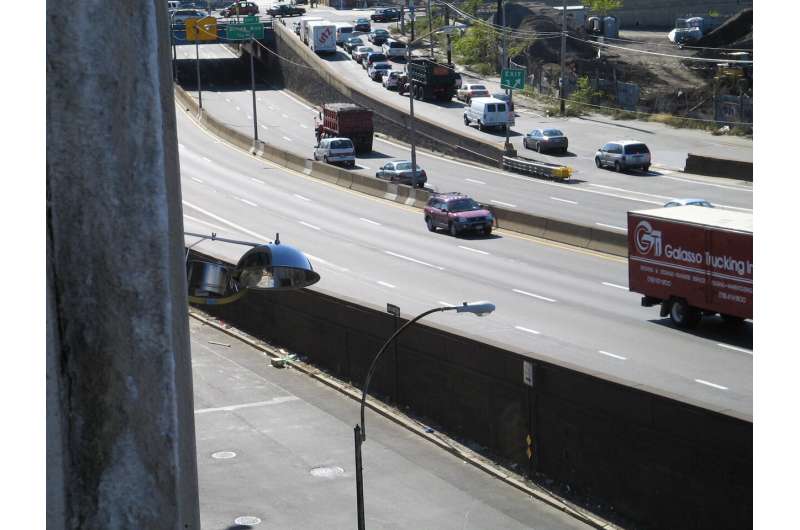Personal protection and public policy change can decrease health impact of air pollution

Reducing exposure to air pollution and reversing the negative impact of poor air quality on heart health through individual, industry and policy measures is essential to drive down disparities in health outcomes. The American Heart Association, the world's leading voluntary health organization dedicated to building longer, healthier lives, today published a scientific statement and policy guidance in its flagship, peer-reviewed journal Circulation that address societal efforts to improve air quality, reduce air pollution and mitigate its health effects on communities nationwide.
The new scientific statement, Personal-Level Protective Actions Against Particulate Matter Air Pollution Exposure, assesses the latest science on personal protective measures to reduce the negative impact of poor air quality and points to the need to implement protective measures for people with high exposure levels to air pollution and those at high risk for negative health impacts from exposure to polluted air. In some cases, individuals should consider use of affordable devices that are most appropriate for their situation. The following types of devices are recommended based on risk and exposure levels: Portable Air Cleaners, High Efficiency HVAC Filters, N95 Respirators and Automobile Cabin Filters.
"People who are exposed to high levels of air pollution or are at high risk for health complications from polluted air should seriously consider personal protective measures such as avoiding polluted areas, staying indoors, being physically active in the safest way possible and utilizing affordable protective devices," said Sanjay Rajagopalan, M.D., lead author of the scientific statement and chief of Cardiovascular Medicine at University Hospitals and Director of the Cardiovascular Research Institute at Case Western Reserve University's School of Medicine. "These include populations living or working near factories or high-traffic roads that produce significant amounts of pollution, communities impacted by wildfires and people with a wide range of health conditions that put them at risk."
The new policy statement, "Guidance to Reduce the Cardiovascular Burden of Ambient Air Pollutants," builds on evidence presented in the new scientific statement and the AHA's two previous scientific statements addressing air quality: "Air Pollution and Cardiovascular Disease," published in 2004, and "Particulate Matter Air Pollution and Cardiovascular Disease," published in 2010, both of which showed growing evidence that poor air quality can cause heart disease and stroke.
The policy statement discusses policy guidance at the local, state and federal levels to improve the health of our communities. The policies are intended to reduce the negative health impact and inequity of air pollution, and to improve standards for air quality, energy generation and vehicle emissions. The statement notes that industry innovation and public-private partnerships are also critical to achieving these goals.
"Policy change is essential to reducing exposure to air pollution and reversing the negative impact of poor air quality on heart health," said Joel Kaufman, M.D., M.P.H., lead author of the policy paper and professor at the University of Washington's School of Public Health and School of Medicine. "We have made big progress in improving air quality in the U.S. over the last 50 years, but inequities still exist, and we need to consider clean air a right for all communities. This policy statement highlights ways we can improve heart health by reducing environmental inequalities."
The policy statement concludes the following:
- Advocacy efforts should focus on those most impacted by poor air quality, including Black and Hispanic populations and communities that have historically been marginalized and under-resourced and communities that have the greatest level of exposure to air pollution and are disproportionately impacted by the resulting health harms.
- Robust air quality standards are needed in this country and around the globe to reduce the negative health impact of air pollution.
- Because vehicle emissions significantly contribute to poor air quality, policies should incentivize rapid development of fuel-efficient vehicles to reach zero emissions, reduce traffic congestion and increase active and public transportation opportunities.
- Policies should reduce coal and fossil fuels combustion by supporting the production of renewable sources of energy.
More information: Joel D. Kaufman et al. Guidance to Reduce the Cardiovascular Burden of Ambient Air Pollutants: A Policy Statement From the American Heart Association, Circulation (2020). DOI: 10.1161/CIR.0000000000000930
Robert D. Brook et al. Particulate Matter Air Pollution and Cardiovascular Disease, Circulation (2010). DOI: 10.1161/cir.0b013e3181dbece1
Robert D. Brook et al. Air Pollution and Cardiovascular Disease, Circulation (2004). DOI: 10.1161/01.cir.0000128587.30041.c8

















